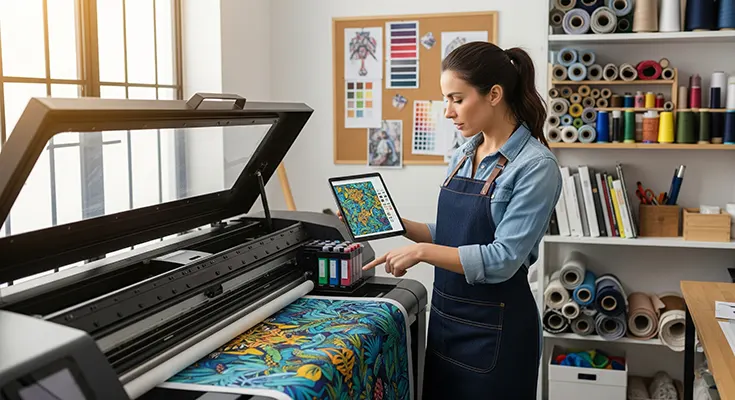The textile design industry has experienced a significant transformation with the advent of digital printing techniques. This innovative approach allows designers to create intricate, vibrant, and customizable patterns with greater efficiency and sustainability compared to traditional methods. For aspiring textile designers, specializing in digital printing techniques opens up diverse and exciting career paths that blend creativity, technology, and innovation. This article explores various career opportunities in textile design with a focus on digital printing and how professionals can thrive in this evolving field.
Understanding Digital Printing in Textile Design
Digital printing involves applying designs directly onto fabric using digital inkjet technology. Unlike conventional printing methods, which require extensive setup and limited color palettes, digital printing offers unlimited design possibilities, rapid prototyping, and eco-friendly processes. This advancement enables textile designers to experiment with complex patterns, gradients, and photographic quality imagery, expanding creative horizons.
Prominent Career Paths in Textile Design with Digital Printing
1. Digital Textile Designer
Digital textile designers are specialists who create patterns and prints using computer-aided design (CAD) software and digital printing technology. Their role focuses on developing innovative designs that align with current fashion and interior trends. They work closely with fashion houses, textile manufacturers, and home décor companies to produce unique prints that set brands apart.
2. Surface Pattern Designer
Surface pattern designers create repeating motifs and patterns that are applied not only to textiles but also to wallpapers, packaging, and stationery. Mastery of digital printing techniques allows them to produce intricate and scalable designs. This career offers opportunities in both freelancing and working for design studios or manufacturers.
3. Textile Print Technician / Production Specialist
This role bridges creative design and manufacturing processes. Textile print technicians oversee the setup and operation of digital printing machinery, ensuring quality control and optimal fabric performance. Experience in digital printing technology and color management is crucial. These professionals are essential in translating designs from digital files to physical prints efficiently.
4. Textile Trend Forecaster
Trend forecasters analyze market patterns, consumer preferences, and emerging technologies to predict future trends in textile printing and design. Specializing in digital printing equips them to advise brands on how to leverage new printing capabilities to meet market demand and sustainability goals.
5. Sustainability Consultant in Textile Printing
As digital printing is more environmentally friendly than traditional methods, specialists in this area can focus on sustainability consulting. They guide companies in adopting digital printing technologies to reduce waste, lower water consumption, and use eco-friendly inks, aligning with global sustainability initiatives.
Essential Skills and Qualifications
- Proficiency in Design Software: Knowledge of Adobe Photoshop, Illustrator, and specialized textile design software like NedGraphics or Texprint.
- Understanding of Digital Printing Technology: Familiarity with inkjet printers, fabric types, and color management systems.
- Creativity and Trend Awareness: Ability to innovate within digital constraints and stay current with fashion and design trends.
- Technical Knowledge: Color science, textile properties, and printing processes.
- Communication Skills: Collaboration with designers, production teams, and clients.
Educational Pathways
Many universities and design schools now offer specialized courses in textile design incorporating digital printing techniques. Degrees or diplomas in textile design, surface pattern design, or fashion technology often include modules on CAD and digital textile printing. Additionally, workshops and certifications focusing on digital printing technology provide valuable hands-on experience.
Future Trends and Opportunities
The textile industry’s shift towards sustainability and fast fashion demands quicker turnaround times and more personalized designs, making digital printing increasingly vital. Emerging technologies like 3D textile printing and smart fabrics further broaden career prospects. Professionals who stay updated with technological advances and sustainable practices will find themselves at the forefront of textile innovation.
Career paths in textile design focusing on digital printing techniques offer a blend of artistic expression and technological expertise, ideal for designers eager to make an impact in a modern, sustainable industry. Whether pursuing roles in design creation, production, trend forecasting, or consulting, specializing in digital printing opens doors to innovative opportunities in fashion, home décor, and beyond. As digital printing continues to reshape the textile landscape, professionals equipped with the right skills and vision will enjoy dynamic and fulfilling careers.





